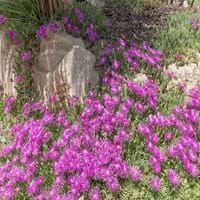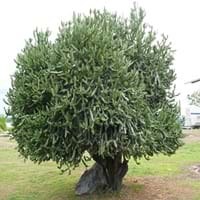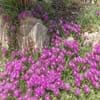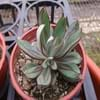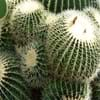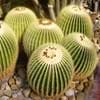Life Span
Perennial
Perennial
Type
Flowering Plants
Cactus or Succulent
Origin
Southern Africa, South Africa
Eastern Asia, India
Types
Not Available
Not Available
Habitat
By seashore, gardens
Temperate Regions, Tropical regions
USDA Hardiness Zone
Not Available
10-11
AHS Heat Zone
Not Available
Not Available
Sunset Zone
Not Available
H1, H2, 24
Habit
Not Available
Oval or Rounded
Minimum Height
Not Available
Minimum Width
Not Available
Flower Color
Not Available
Yellow, Yellow green
Flower Color Modifier
Not Available
Not Available
Fruit Color
Non Fruiting Plant
Pink
Leaf Color in Spring
Not Available
Green
Leaf Color in Summer
Not Available
Green
Leaf Color in Fall
Not Available
Green
Leaf Color in Winter
Not Available
Green
Leaf Shape
Succulent
Succulent
Plant Season
Spring, Summer, Fall, Winter
Spring, Summer, Fall, Winter
Sunlight
Full Sun, Partial Sun
Full Sun, Partial Sun
Growth Rate
Not Available
Fast
Type of Soil
Not Available
Loam, Sand
The pH of Soil
Not Available
Neutral, Alkaline
Soil Drainage
Well drained
Well drained
Bloom Time
Not Available
Indeterminate
Tolerances
Not Available
Drought, Dry soil, Heat Tolerance
Where to Plant?
Container, Ground, Pot
Container, Ground
How to Plant?
Stem Planting, Transplanting
Grafting, Stem Planting
Plant Maintenance
Medium
Low
Watering Requirements
Average Water Needs, Do Not over Water, Never Over-water, Requires watering in the growing season
Average Water Needs, Do Not over Water, Never Over-water
In Summer
Average Water
Ample Water
In Spring
Average Water
Average Water
In Winter
Average Water
Less Watering
Soil pH
Not Available
Neutral, Alkaline
Soil Type
Not Available
Loam, Sand
Soil Drainage Capacity
Well drained
Well drained
Sun Exposure
Full Sun, Partial Sun
Full Sun, Partial Sun
Pruning
Remove damaged leaves, Remove dead branches, Remove dead leaves
Prune if you want to improve plant shape, Remove damaged leaves, Remove dead leaves, Remove dead or diseased plant parts
Fertilizers
All-Purpose Liquid Fertilizer
fertilize in fall, fertilize in spring, fertilize in summer, Nitrogen
Pests and Diseases
Red blotch
Powdery mildew, Red blotch, Root rot, Scale
Plant Tolerance
Drought
Drought, Dry soil, Heat Tolerance
Flowers
Showy
Insignificant
Flower Petal Number
Single
Single
Showy Fruit
Not Available
No
Edible Fruit
Not Available
No
Fragrant Fruit
Not Available
No
Fragrant Leaf
Not Available
No
Fragrant Bark/Stem
Not Available
No
Showy Foliage
Not Available
No
Showy Bark
Not Available
No
Foliage Texture
Bold
Bold
Foliage Sheen
Not Available
Not Available
Self-Sowing
Not Available
Yes
Attracts
Butterflies
Insects
Allergy
Not Available
Skin irritation
Aesthetic Uses
Beautification, Bouquets, Cottage Garden, Decorating walls, Ground Cover, Landscape Designing, Showy Purposes, Used for decorating walls, fences, gates, hedges, etc.
Beautification, Bonsai, Landscape Designing, Showy Purposes
Beauty Benefits
Not Available
No Beauty Benefits
Environmental Uses
Food for insects
Air purification, Erosion control, Food for insects, Very little waste, Wildlife
Medicinal Uses
No Medicinal Use
Not Available
Part of Plant Used
Flowers
Leaves
Other Uses
Decoration Purposes, Showy Purposes, Used as Ornamental plant
Air freshner, Showy Purposes, Traditional medicine, Used as Ornamental plant, Used for its medicinal properties
Used As Indoor Plant
No
Yes
Used As Outdoor Plant
Yes
Yes
Garden Design
Container, Edging, Groundcover, Mixed Border, Rock Garden, Wall
Container, Foundation, Hedges, Houseplant, Mixed Border, Tropical
Botanical Name
DELOSPERMA
EUPHORBIA lactea
Common Name
Trailing Iceplant
Mottled Spurge, Frilled Fan, Elkhorn
In Hindi
Delosperma cooperi
Elkhorn
In German
Mittagsblume
Elkhorn
In French
Delosperma cooperi
Elkhorn
In Spanish
Delosperma cooperi
cuerno de alce
In Greek
Delosperma cooperi
Elkhorn
In Portuguese
Delosperma cooperi
Elkhorn
In Polish
Delosperma cooperi
Elkhorn
In Latin
Delosperma cooperi
Elkhorn
Phylum
Not Available
Tracheophyta
Class
Magnoliopsida
Magnoliopsida
Order
Caryophyllales
Malpighiales
Family
Aizoaceae
Euphorbiaceae
Genus
Caryophyllales
Euphorbia
Clade
Angiosperms, Core eudicots, Eudicots
Angiosperms, Eudicots, Rosids
Tribe
Not Available
Euphorbieae
Subfamily
Ruschioideae
Euphorbioideae
Number of Species
Not Available
Season and Care of Delosperma cooperi and Elkhorn
Season and care of Delosperma cooperi and Elkhorn is important to know. While considering everything about Delosperma cooperi and Elkhorn Care, growing season is an essential factor. Delosperma cooperi season is Spring, Summer, Fall and Winter and Elkhorn season is Spring, Summer, Fall and Winter. The type of soil for Delosperma cooperi is Not Available and for Elkhorn is Loam, Sand while the PH of soil for Delosperma cooperi is Not Available and for Elkhorn is Neutral, Alkaline.
Delosperma cooperi and Elkhorn Physical Information
Delosperma cooperi and Elkhorn physical information is very important for comparison. Delosperma cooperi height is Not Available and width Not Available whereas Elkhorn height is 120.00 cm and width 12.00 cm. The color specification of Delosperma cooperi and Elkhorn are as follows:
Delosperma cooperi flower color: Not Available
Delosperma cooperi leaf color: Not Available
Elkhorn flower color: Yellow and Yellow green
- Elkhorn leaf color: Green
Care of Delosperma cooperi and Elkhorn
Care of Delosperma cooperi and Elkhorn include pruning, fertilizers, watering etc. Delosperma cooperi pruning is done Remove damaged leaves, Remove dead branches and Remove dead leaves and Elkhorn pruning is done Prune if you want to improve plant shape, Remove damaged leaves, Remove dead leaves and Remove dead or diseased plant parts. In summer Delosperma cooperi needs Average Water and in winter, it needs Average Water. Whereas, in summer Elkhorn needs Ample Water and in winter, it needs Less Watering.
